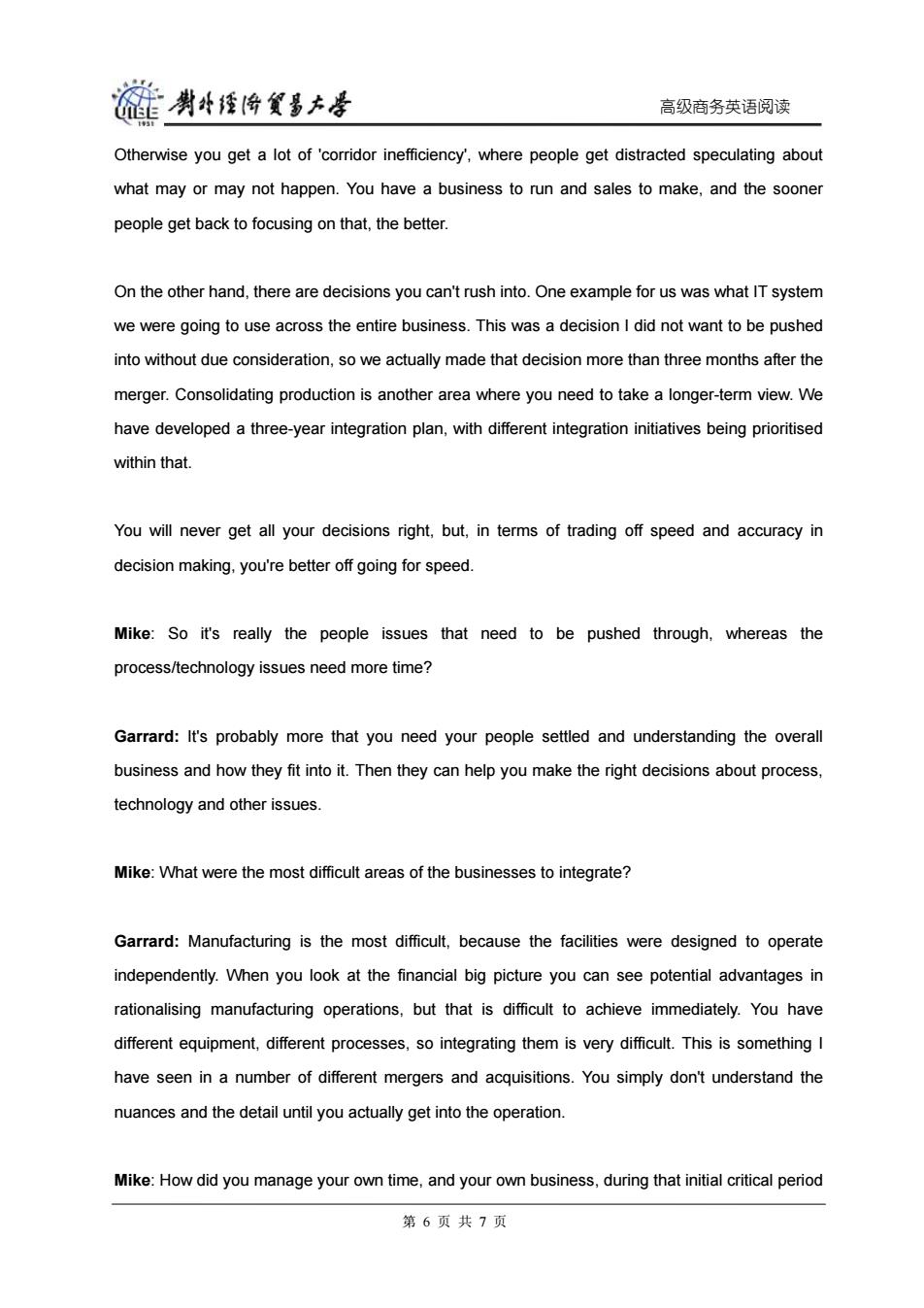正在加载图片...

碰男将多大是 高级商务英语阅读 Otherwise you get a lot of 'corridor inefficiency,where people get distracted speculating about what may or may not happen.You have a business to run and sales to make,and the sooner people get back to focusing on that,the better. On the other hand,there are decisions you can't rush into.One example for us was what IT system we were going to use across the entire business.This was a decision I did not want to be pushed into without due consideration,so we actually made that decision more than three months after the merger.Consolidating production is another area where you need to take a longer-term view.We have developed a three-year integration plan,with different integration initiatives being prioritised within that. You will never get all your decisions right,but,in terms of trading off speed and accuracy in decision making,you're better off going for speed. Mike:So it's really the people issues that need to be pushed through,whereas the process/technology issues need more time? Garrard:It's probably more that you need your people settled and understanding the overall business and how they fit into it.Then they can help you make the right decisions about process, technology and other issues. Mike:What were the most difficult areas of the businesses to integrate? Garrard:Manufacturing is the most difficult,because the facilities were designed to operate independently.When you look at the financial big picture you can see potential advantages in rationalising manufacturing operations,but that is difficult to achieve immediately.You have different equipment,different processes,so integrating them is very difficult.This is something I have seen in a number of different mergers and acquisitions.You simply don't understand the nuances and the detail until you actually get into the operation. Mike:How did you manage your own time,and your own business,during that initial critical period 第6页共7页高级商务英语阅读 Otherwise you get a lot of 'corridor inefficiency', where people get distracted speculating about what may or may not happen. You have a business to run and sales to make, and the sooner people get back to focusing on that, the better. On the other hand, there are decisions you can't rush into. One example for us was what IT system we were going to use across the entire business. This was a decision I did not want to be pushed into without due consideration, so we actually made that decision more than three months after the merger. Consolidating production is another area where you need to take a longer-term view. We have developed a three-year integration plan, with different integration initiatives being prioritised within that. You will never get all your decisions right, but, in terms of trading off speed and accuracy in decision making, you're better off going for speed. Mike: So it's really the people issues that need to be pushed through, whereas the process/technology issues need more time? Garrard: It's probably more that you need your people settled and understanding the overall business and how they fit into it. Then they can help you make the right decisions about process, technology and other issues. Mike: What were the most difficult areas of the businesses to integrate? Garrard: Manufacturing is the most difficult, because the facilities were designed to operate independently. When you look at the financial big picture you can see potential advantages in rationalising manufacturing operations, but that is difficult to achieve immediately. You have different equipment, different processes, so integrating them is very difficult. This is something I have seen in a number of different mergers and acquisitions. You simply don't understand the nuances and the detail until you actually get into the operation. Mike: How did you manage your own time, and your own business, during that initial critical period 第 6 页 共 7 页